Abstract
Pigeons were exposed to stimuli correlated with the presence or absence of a variable-interval 60-second schedule of reinforcement only while they depressed a crossbar or "perch." In the first experiment, the stimuli were different tilts of a line displayed on the key. When the difference in brightness between the line and the background (salience) was maximal, seven of eight birds acquired the discrimination, but when the difference was reduced by 50%, only one succeeded. In the second experiment, wavelength of chamber illumination served as the relevant dimension. Neither experiment showed a large effect attributable to the magnitude of the difference (disparity) between the positive and the negative stimulus. Individual differences in time spent observing were positively correlated with level of discrimination in the presence of the stimuli. All birds produced the positive stimulus for a greater proportion of the available time than they did the negative stimulus. This may be the mechanism that provides selective reinforcement of observing. Finally, the formation of a discrimination was analyzed in terms of changes in the proportion of time spent in contact with the discriminative stimuli.
Full text
PDF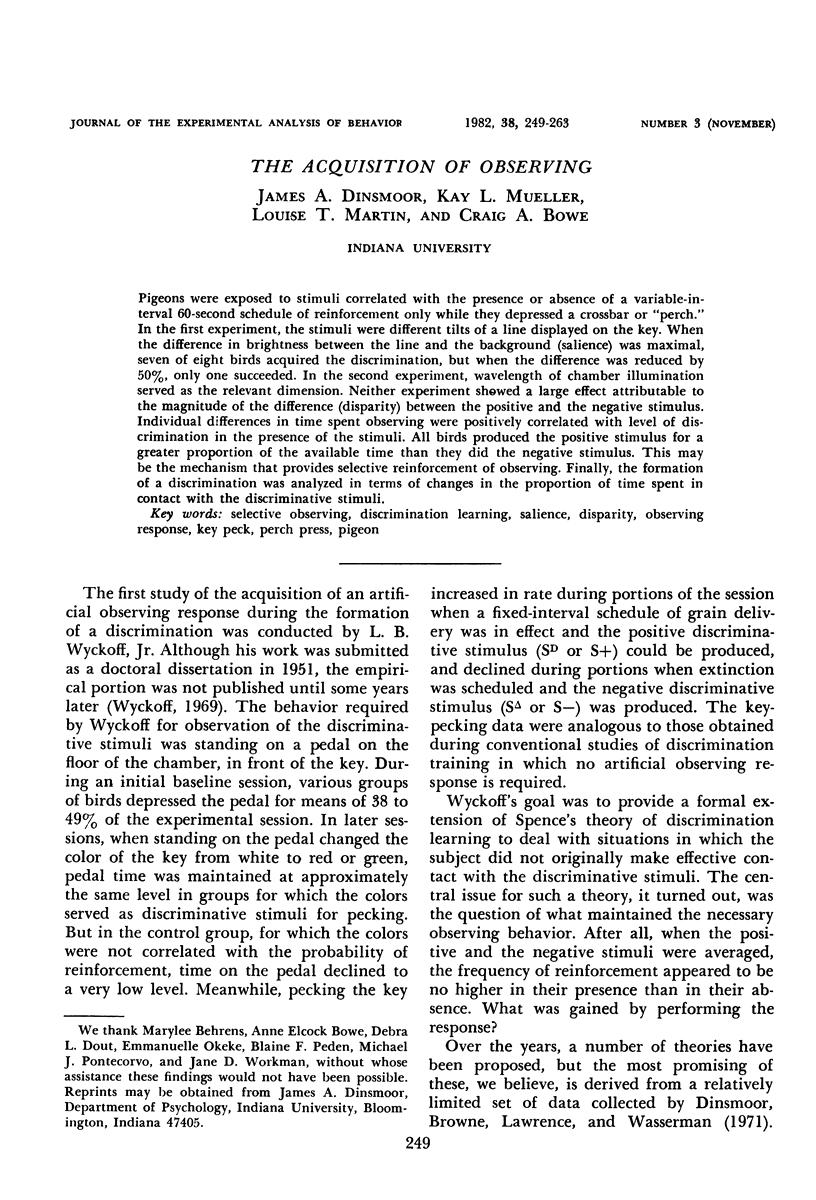
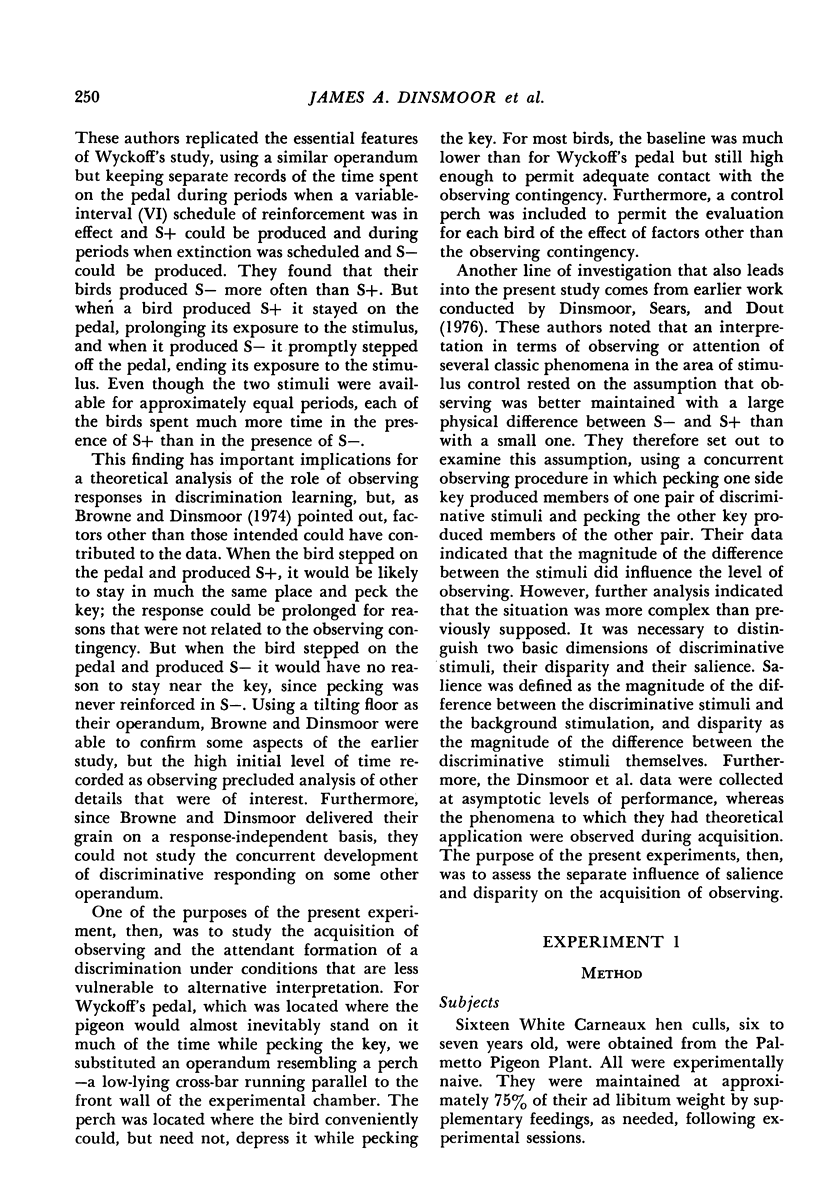
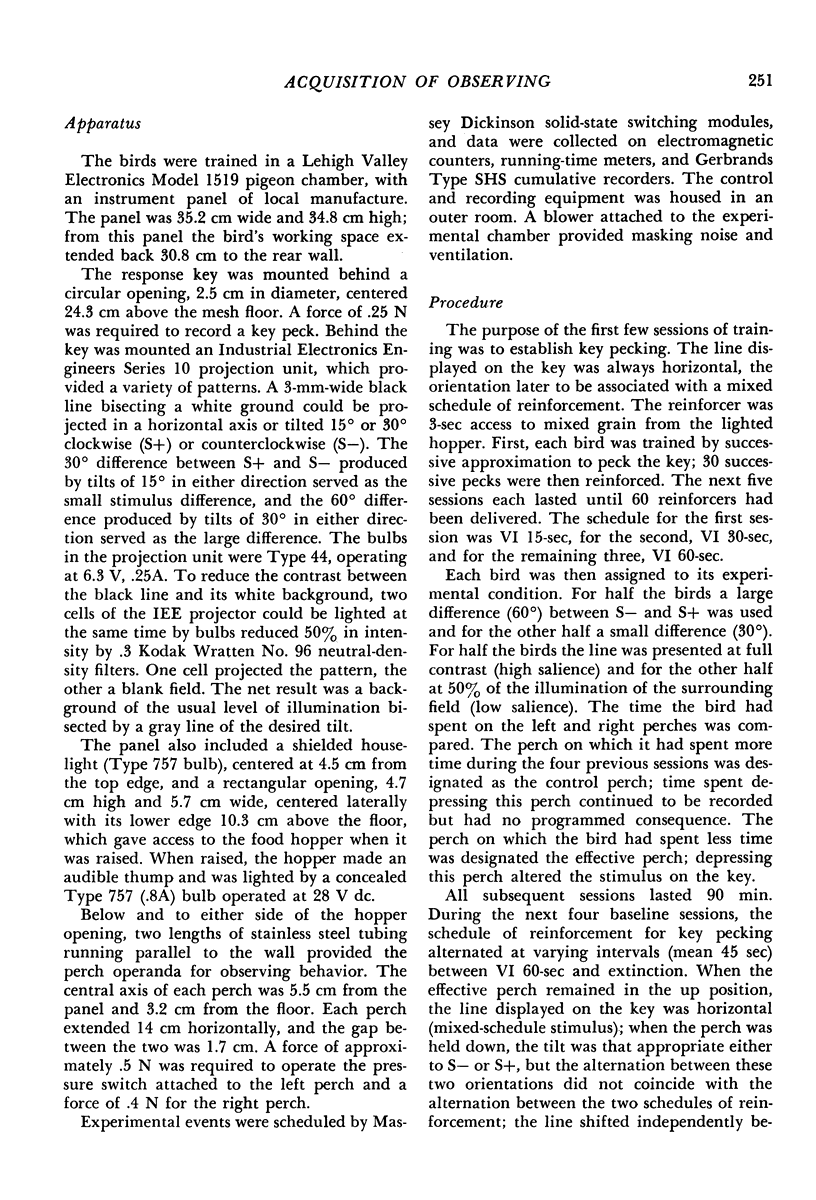
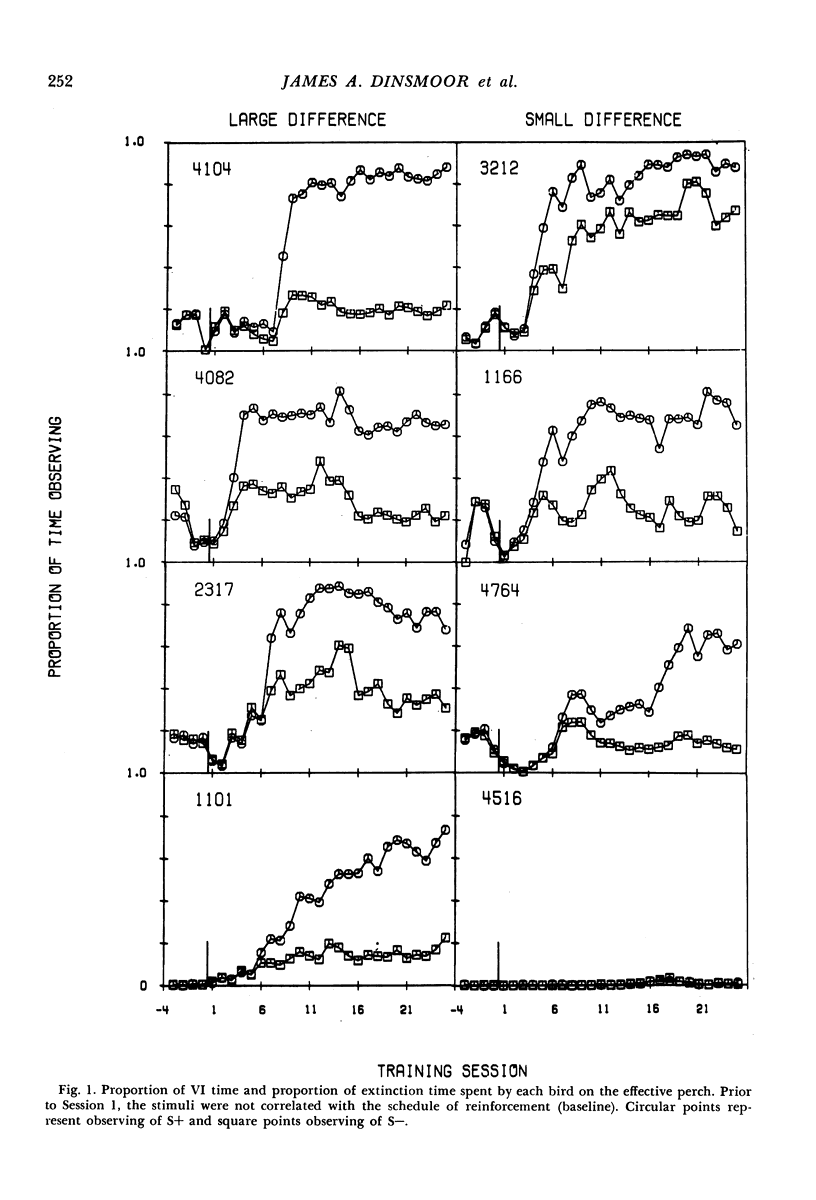
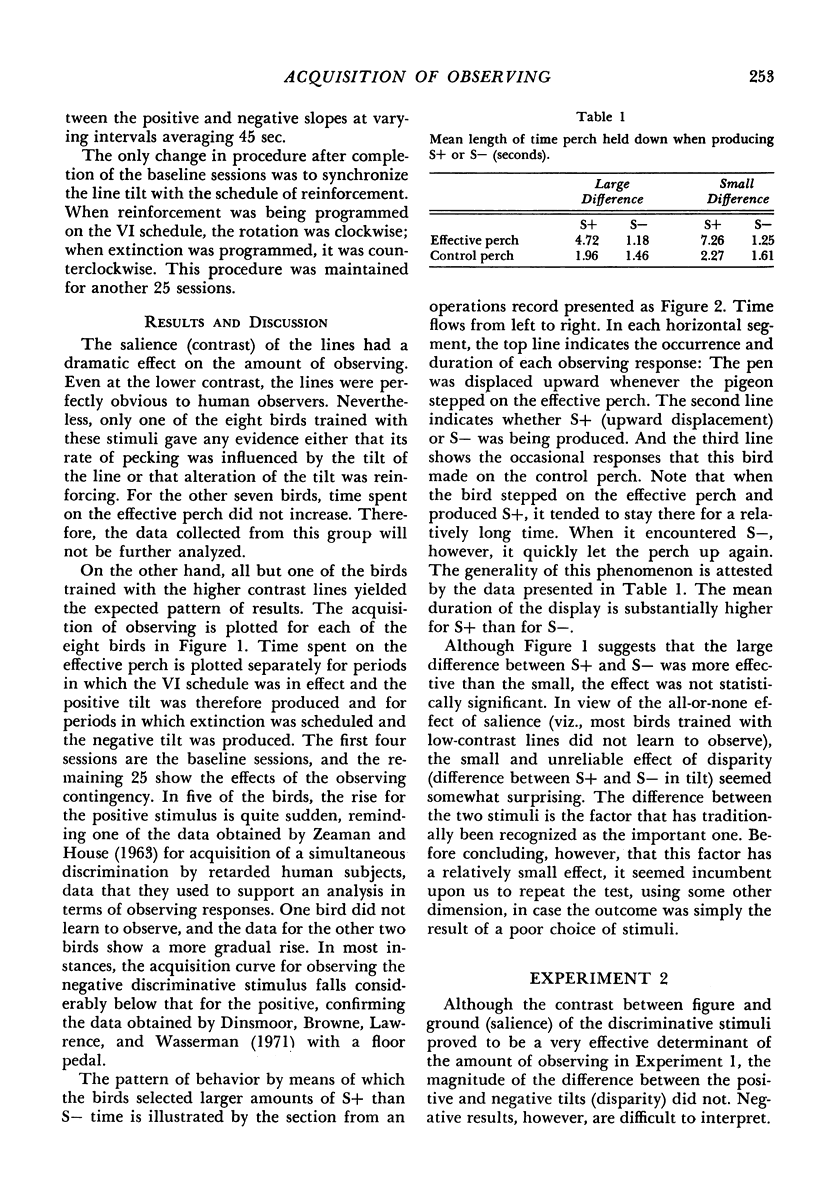
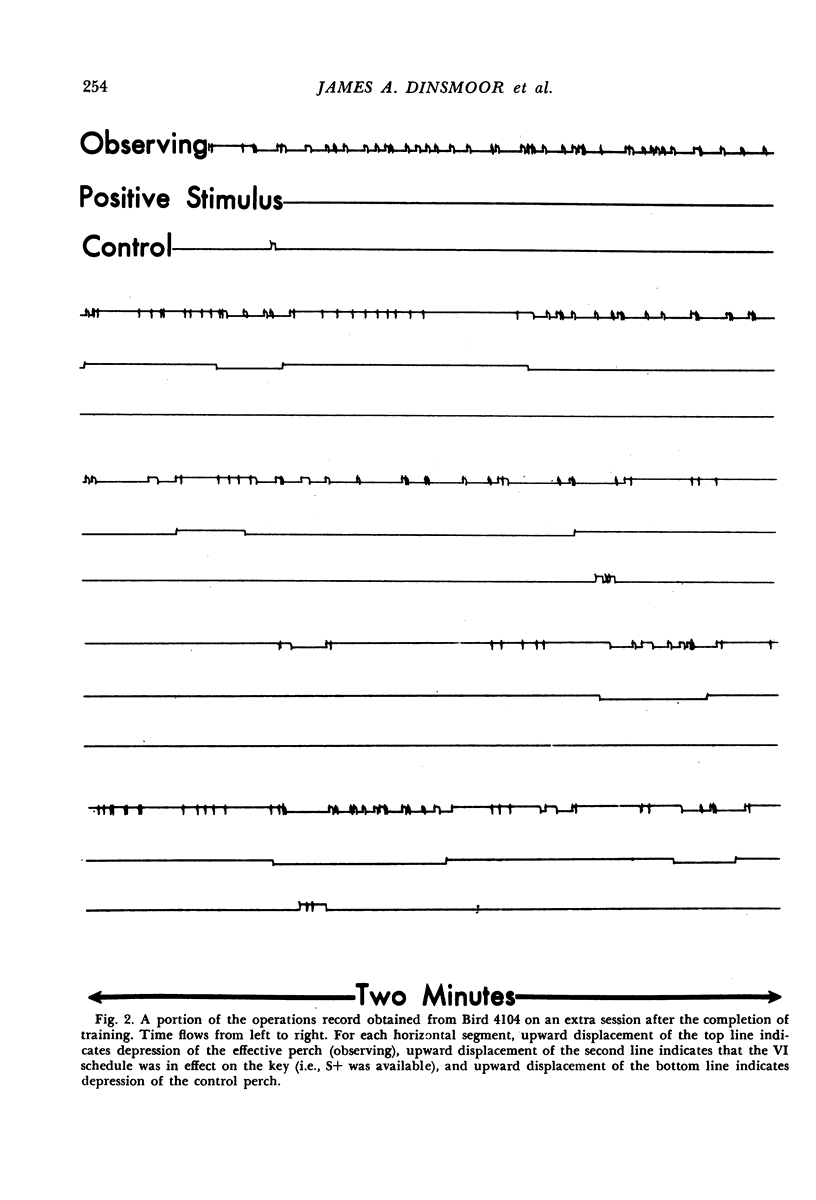
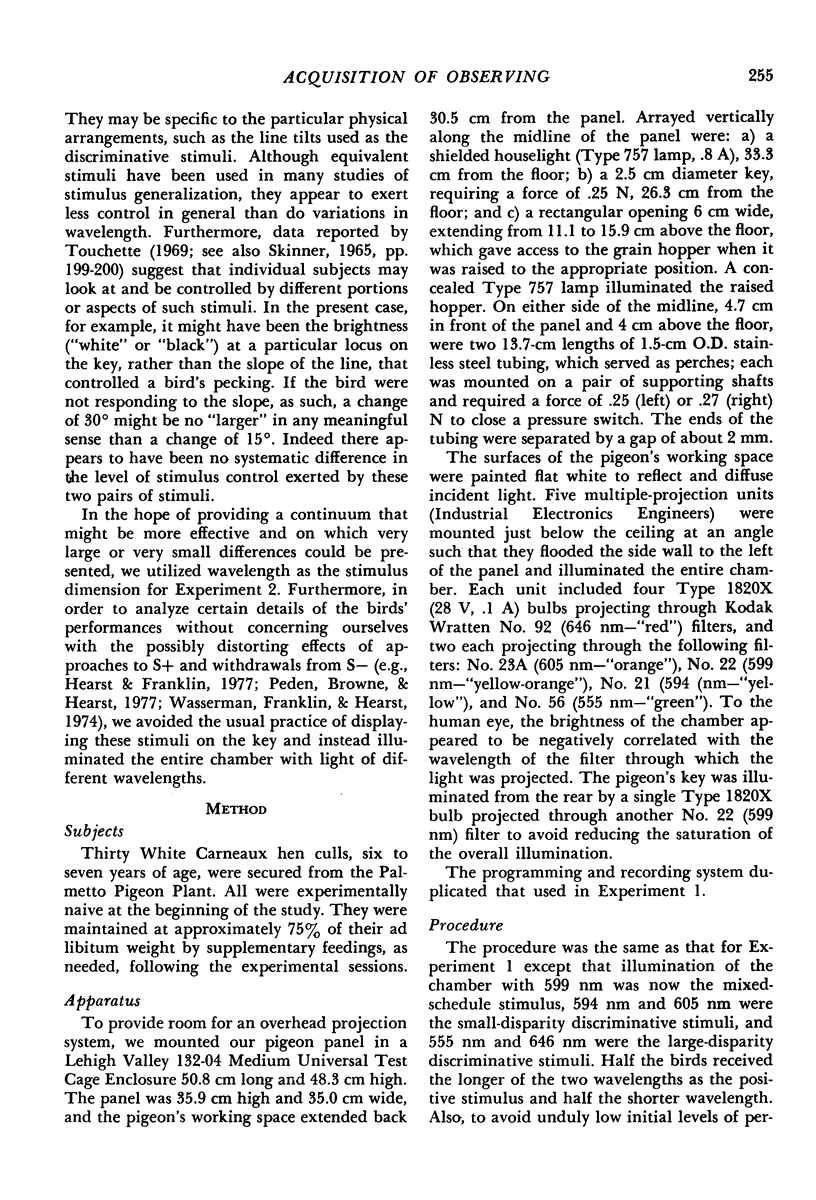
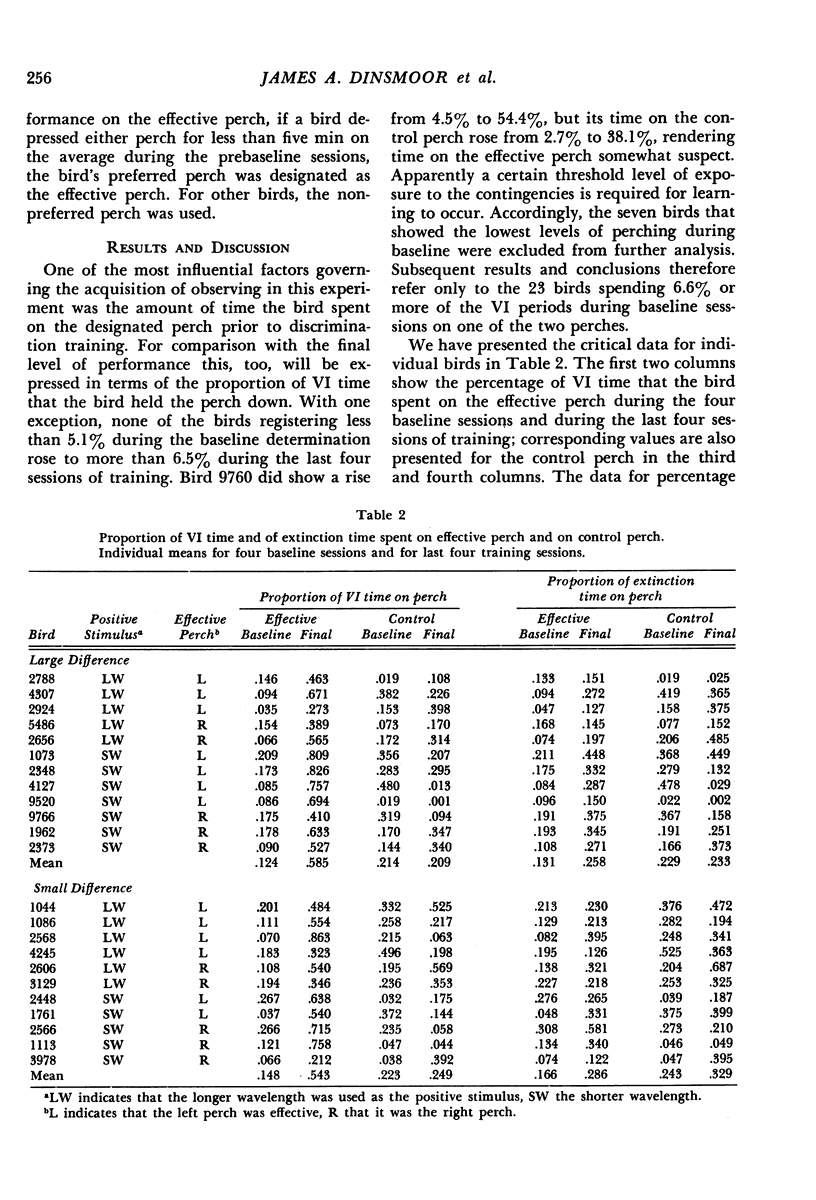
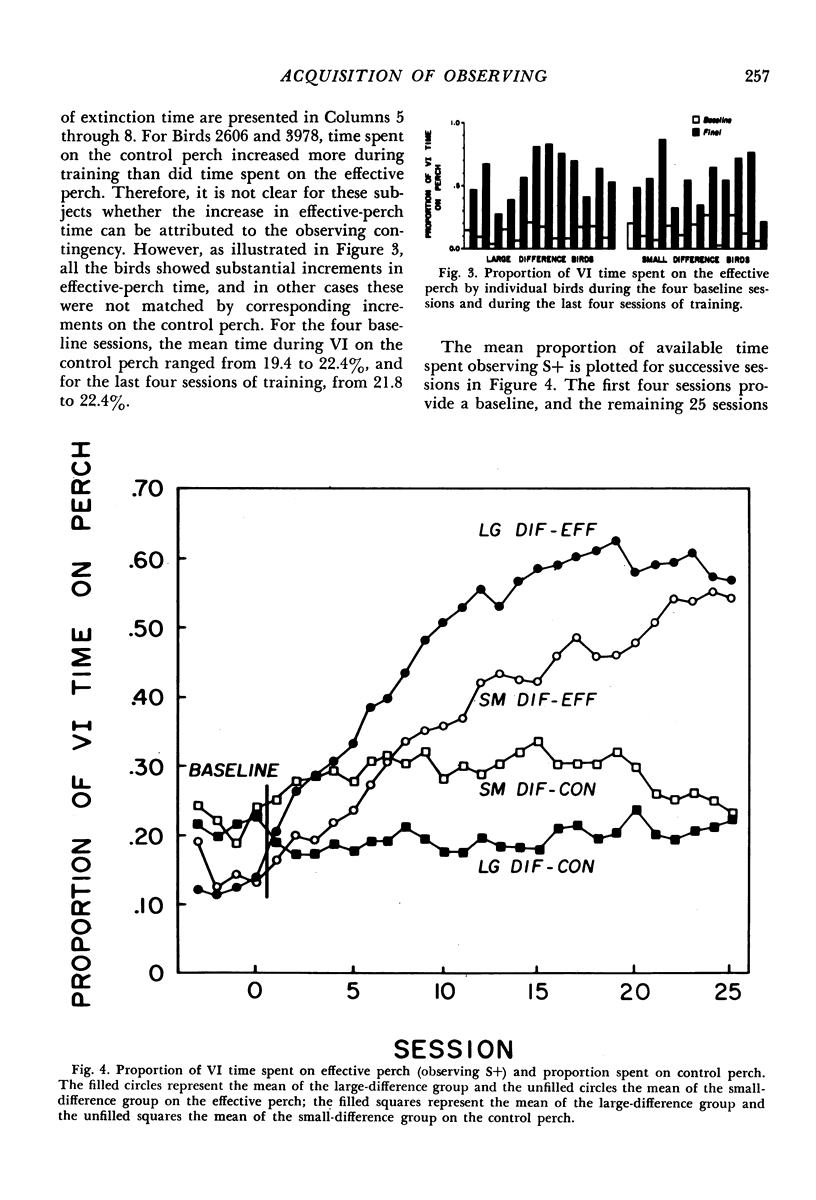
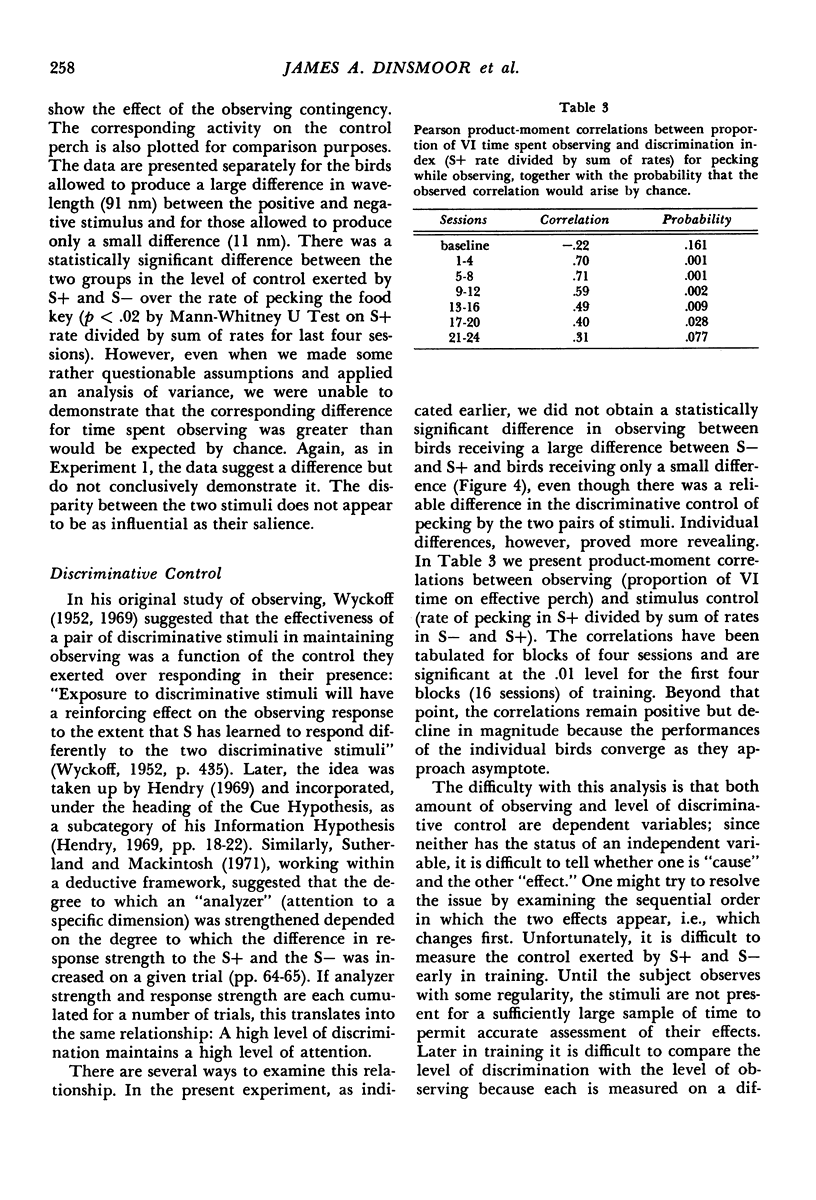
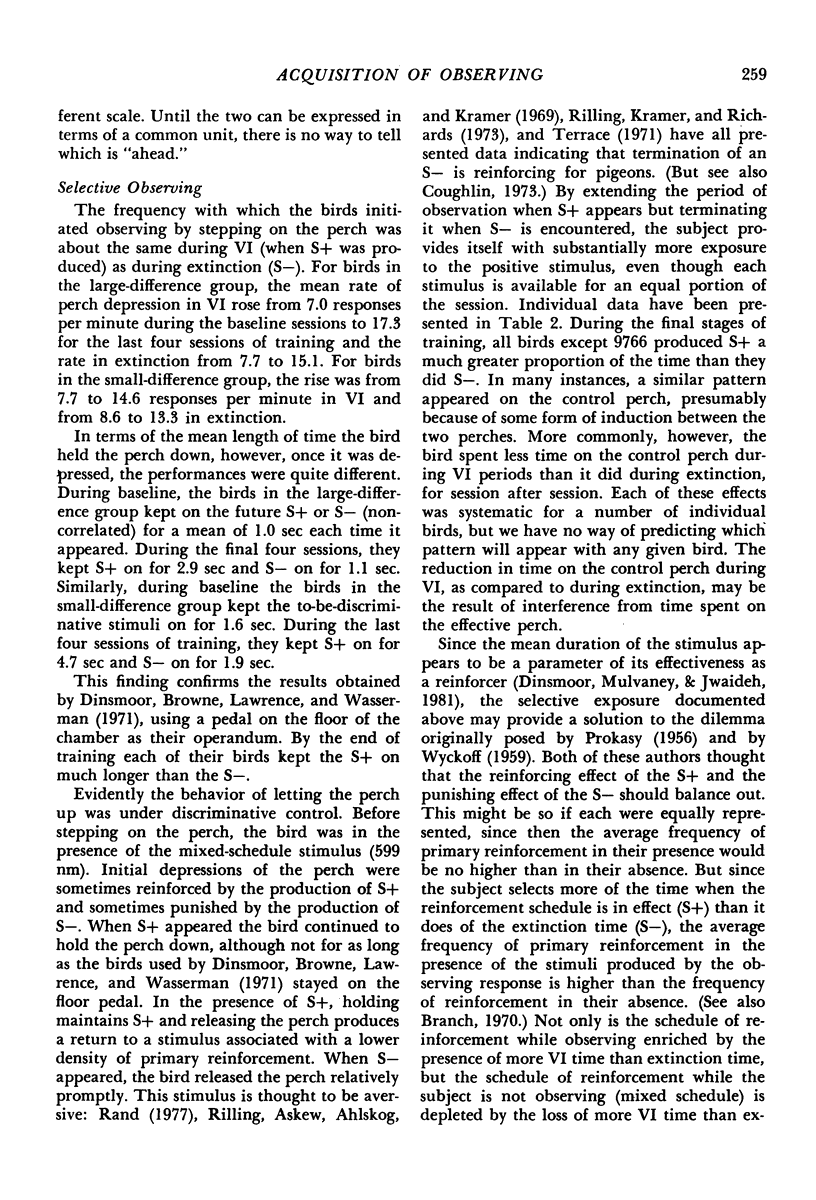
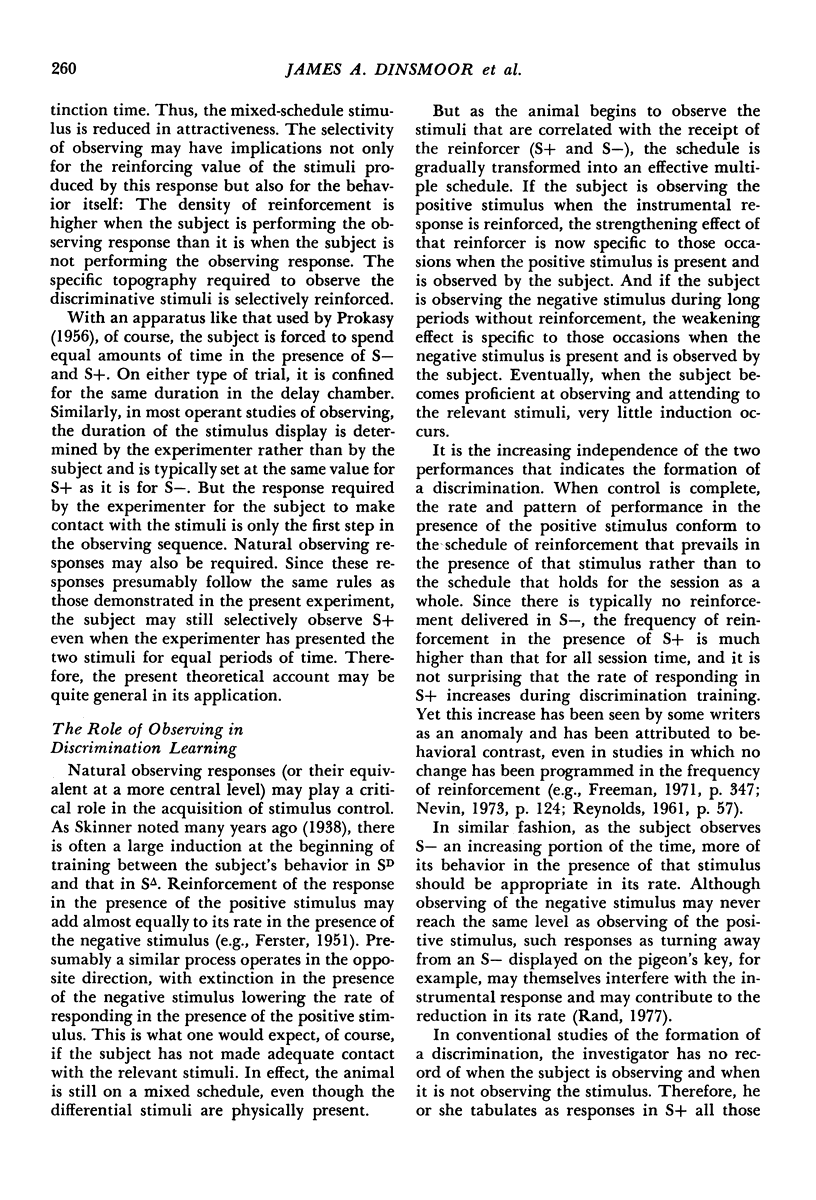
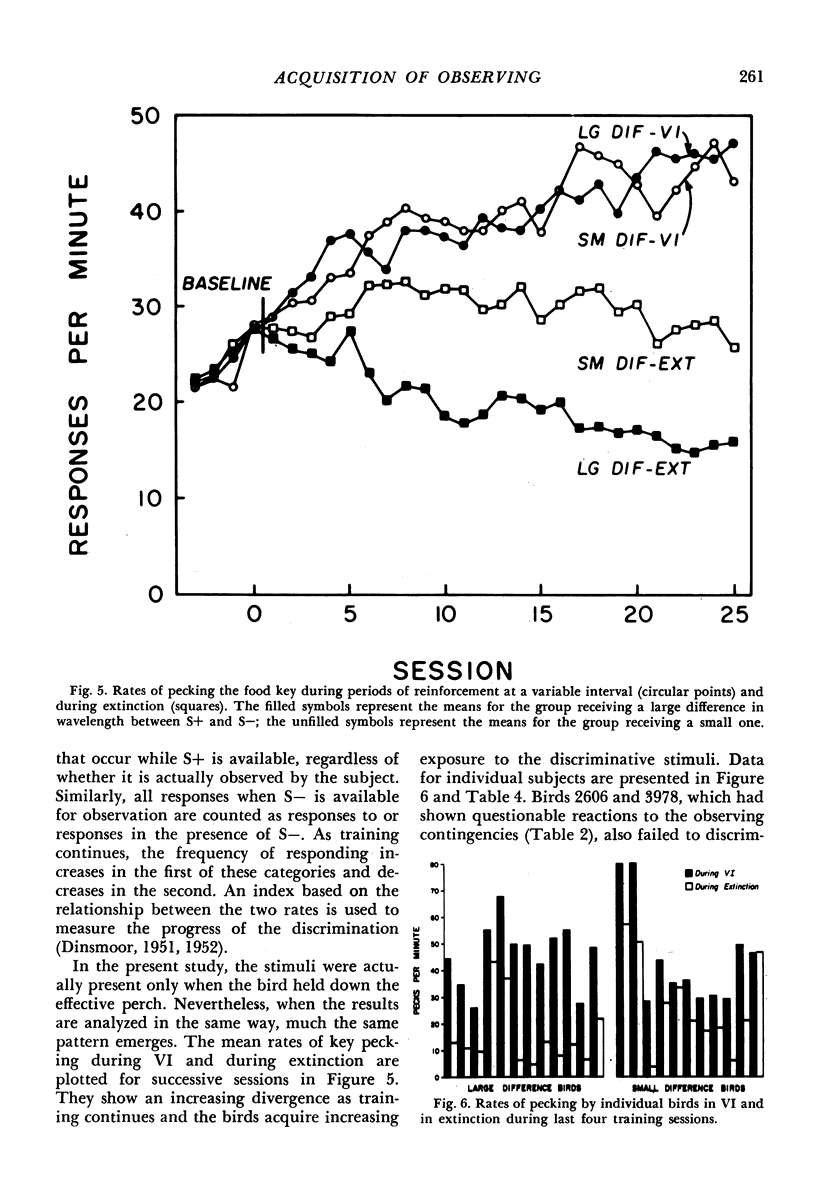
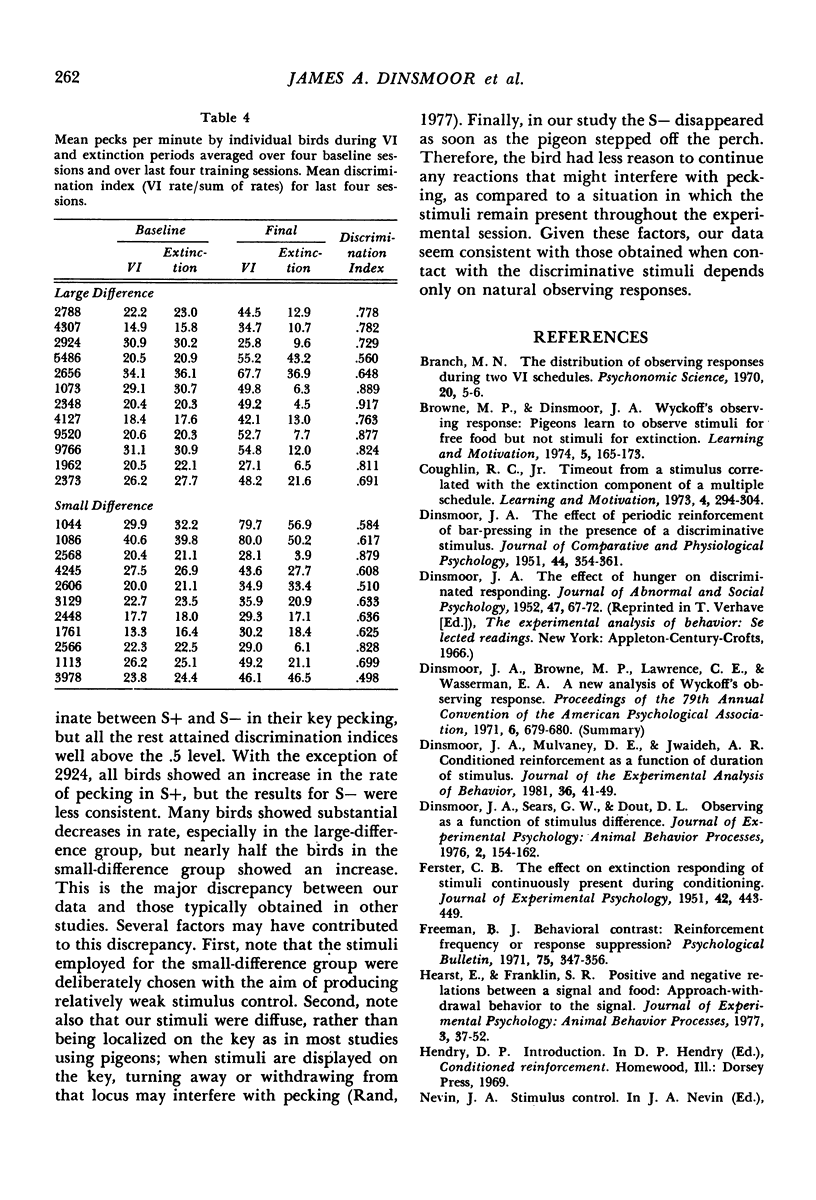
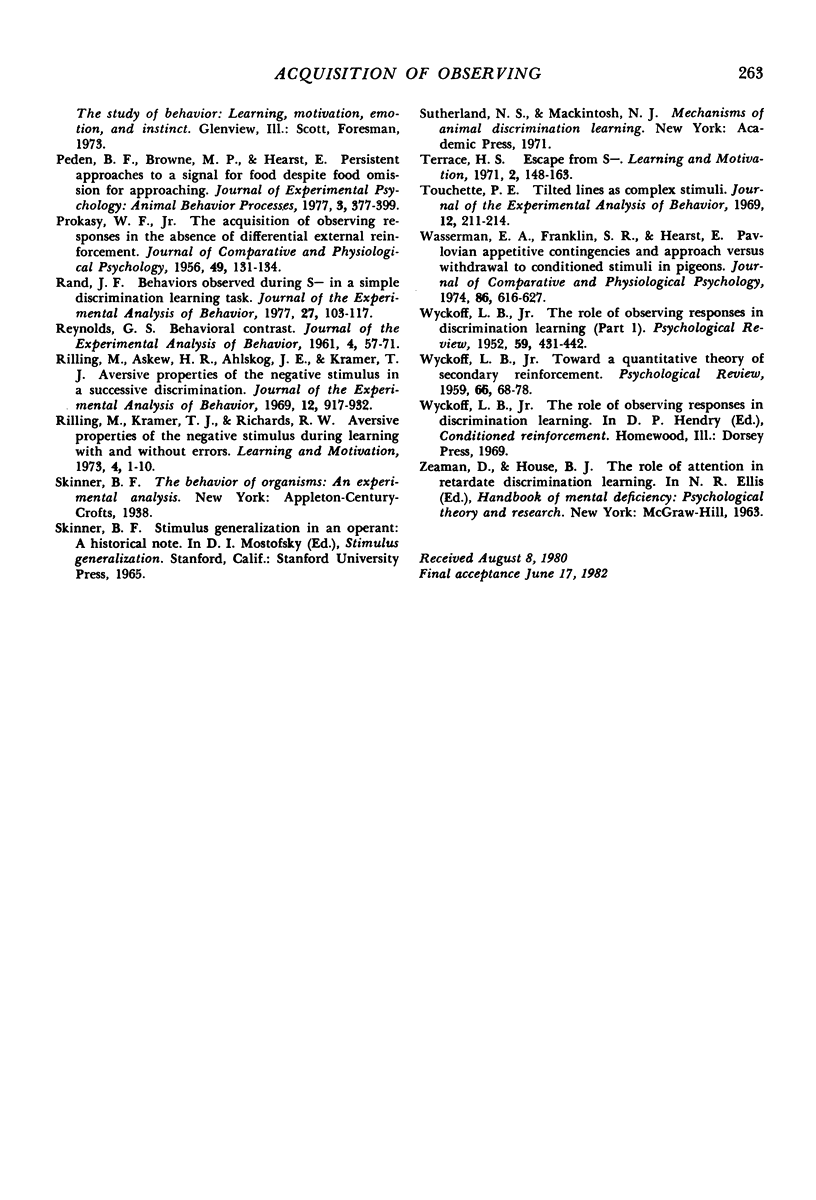
Selected References
These references are in PubMed. This may not be the complete list of references from this article.
- DINSMOOR J. A. The effect of periodic reinforcement of bar-pressing in the presence of a discriminative stimulus. J Comp Physiol Psychol. 1951 Aug;44(4):354–361. doi: 10.1037/h0060006. [DOI] [PubMed] [Google Scholar]
- Dinsmoor J. A., Mulvaney D. E., Jwaideh A. R. Conditioned reinforcement as a function of duration of stimulus. J Exp Anal Behav. 1981 Jul;36(1):41–49. doi: 10.1901/jeab.1981.36-41. [DOI] [PMC free article] [PubMed] [Google Scholar]
- FERSTER C. B. The effect on extinction responding of stimuli continuously present during conditioning. J Exp Psychol. 1951 Dec;42(6):443–449. doi: 10.1037/h0055675. [DOI] [PubMed] [Google Scholar]
- PROKASY W. F., Jr The acquisition of observing responses in the absence of differential external reinforcement. J Comp Physiol Psychol. 1956 Apr;49(2):131–134. doi: 10.1037/h0046740. [DOI] [PubMed] [Google Scholar]
- REYNOLDS G. S. Behavioral contrast. J Exp Anal Behav. 1961 Jan;4:57–71. doi: 10.1901/jeab.1961.4-57. [DOI] [PMC free article] [PubMed] [Google Scholar]
- Rand J. F. Behaviors observed during S- in a simple discrimination learning task. J Exp Anal Behav. 1977 Jan;27(1):103–117. doi: 10.1901/jeab.1977.27-103. [DOI] [PMC free article] [PubMed] [Google Scholar]
- Rilling M., Askew H. R., Ahlskog J. E., Kramer T. J. Aversive properties of the negative stimulus in a successive discrimination. J Exp Anal Behav. 1969 Nov;12(6):917–932. doi: 10.1901/jeab.1969.12-917. [DOI] [PMC free article] [PubMed] [Google Scholar]
- Touchette P. E. Tilted lines as complex stimuli. J Exp Anal Behav. 1969 Mar;12(2):211–214. doi: 10.1901/jeab.1969.12-211. [DOI] [PMC free article] [PubMed] [Google Scholar]
- WYCKOFF L. B., Jr The role of observing responses in discrimination learning. Psychol Rev. 1952 Nov;59(6):431–442. doi: 10.1037/h0053932. [DOI] [PubMed] [Google Scholar]
- WYCKOFF L. B. Toward a quantitative theory of secondary reinforcement. Psychol Rev. 1959 Jan;66(1):68–78. doi: 10.1037/h0046882. [DOI] [PubMed] [Google Scholar]
- Wasserman E. A., Franklin S. R., Hearst E. Pavlovian appetitive contingencies and approach versus withdrawal to conditioned stimuli in pigeons. J Comp Physiol Psychol. 1974 Apr;86(4):616–627. doi: 10.1037/h0036171. [DOI] [PubMed] [Google Scholar]


